STUDENTS PROJECTS
PROJECTS2012
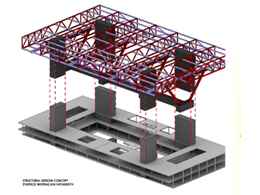
29 May, 2013
Strategic architectural design development
United Nations Headquarters for Sustainability/UN Environmental Council, Manhattan Midtown East, New York City.
Student : Georgios Siokas
Chair of Materialization and Design Development: Prof. Ir. C.H.C.F. (Kees) Kaan
Supervisor/ main mentor: Ir. Engbert van der Zaag
Second mentor: Ir. Hubert van der Meel
Delft University of Technology, NL
Defense date: July 5th 2012
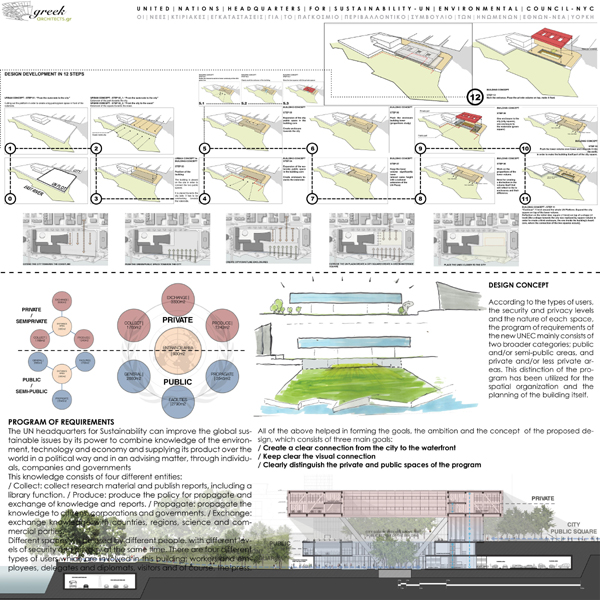
UNEC-Concept and architectural guidelines.
The United Nations Environmental Council, the new, 6th Council, will be in charge for the coordination of sustainability issues, such as waste problems, energy problems and securing biodiversity on the planet, aiming to marshal the existing fragmented running programs (such as UNEP) and coordinate these issues on a global level. United Nations is a none boundary organization. Regardless the location of the new UN headquarters, the new building should manifest one single fact: that it doesn't acquire its identity by the country that it is being hosted in, but from the whole world. Therefore, it should point out the fact that it is a global building, serving a global purpose. It has to manifest and promote its purpose and not only the general local culture.
Furthermore, the building has to co-exist with its surroundings, from both the city side and the waterside, and gain acknowledgement from the public; on the one hand, the presence of the building towards the 1st Avenue should achieve uniformity and continuity with the city of Manhattan. On the other hand, from the river side, the building should become a landmark for the city, since in this way it could manifest both its uniqueness and difference from the rest of Manhattan, giving the intention of a "global building". Also, the visual continuity from the city to the waterfront is crucial. The new building shouldn't be standing as an obstacle which is blocking the view and the connection from the city to the river side. At the same time, it should not outshine its colossal
neighbors (existing UN etc), but it should have a strong character in order to be able to create a "healthy competition" with its surroundings. On the urban level, the connection of the UN plot with the Manhattan Midtown East grid was crucial. Extending the city within the region of the UN plot results in the creation of a public square that is sheltered from the building itself. This public space, apart from becoming the main entrance area to the building, is very meaningful for the wider city, since Manhattan suffers from the lack of open and public spaces. Furthermore, the UN plot, along with an adjacent open green space, are the only few left open visual connections to the waterfront.
In a similar way, preserving an open space from the waterfront to the city was also crucial. By creating a green square on the water side, and extending this square into the core of the building in the form of a courtyard, immediately the building itself becomes the connecting element in the previously fragmented continuity from the city to the water. In this way, the lower volume of the building is actually an intermediate space between two squares of different character, while the floating volume takes the role of the "shelter" to this triple public space.Thus this proposal manages to sustain life all around it, by providing such a tremendous amount of public spaces (in comparison to the plot's overall size) to the people of New York.
The distinction of the building in two volumes, which corresponds to a distinction between the more public and more private parts of the program, sets the standards for the needed boundaries and security of the building. Openness and spatial continuity are the main qualities of the areas distributed around an open central space connecting the different areas of the building. With its skylights and vertical continuity of the space, the building creates multiple levels of visual interaction.
Thus, the value of this graduation project lies in being a design assignment for a project that deals with the question of sustainability from an extremely important stand point, which is not only minimizing the environmental impact of a building, energy consumption, etc; but rather how to coordinate these efforts as well as increase the sustainability awareness of the whole world.
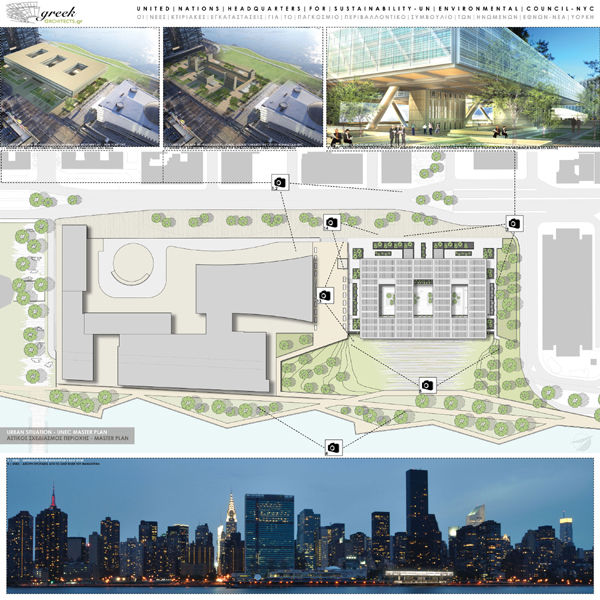
UNEC-Urban context/Urban Situation/Master Plan.
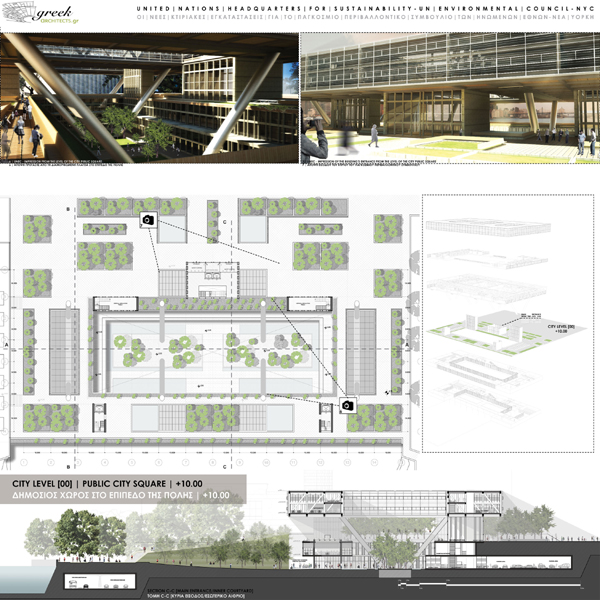
UNEC-City side square plan/Floor plan 00 (+10.00).
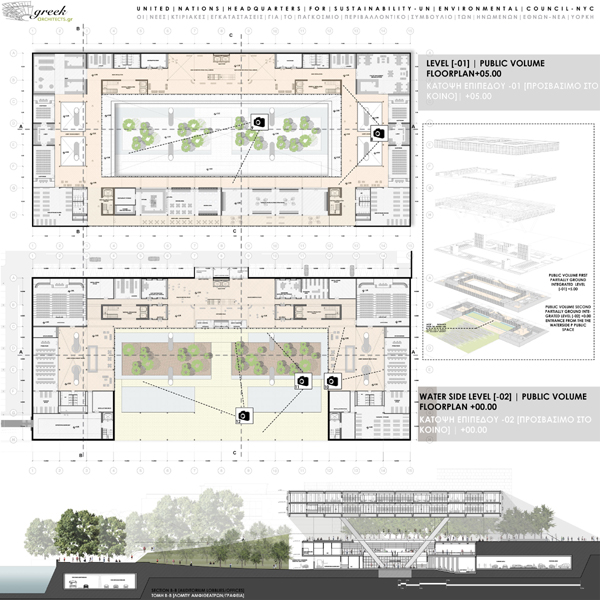
UNEC-Floor plan -01 [+05.00]/Floor paln -02 [+00.00]/Section B-B.
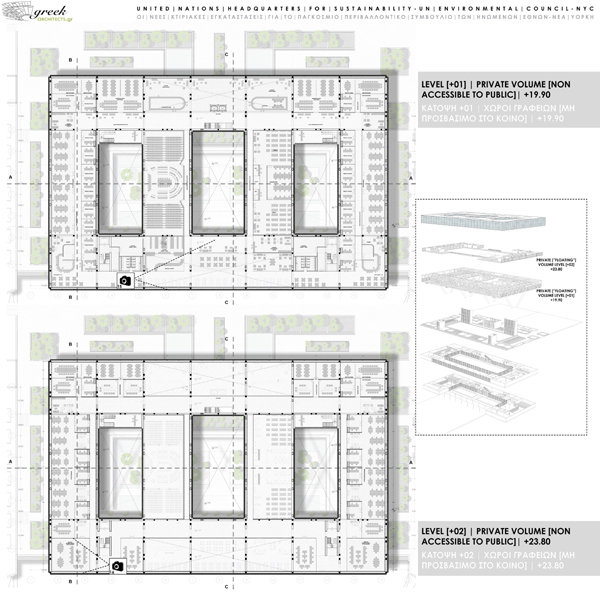
UNEC-Floor Plan +01 (private volume) [+19.90]/Floor Plan +02 (private volume) [+23.80].
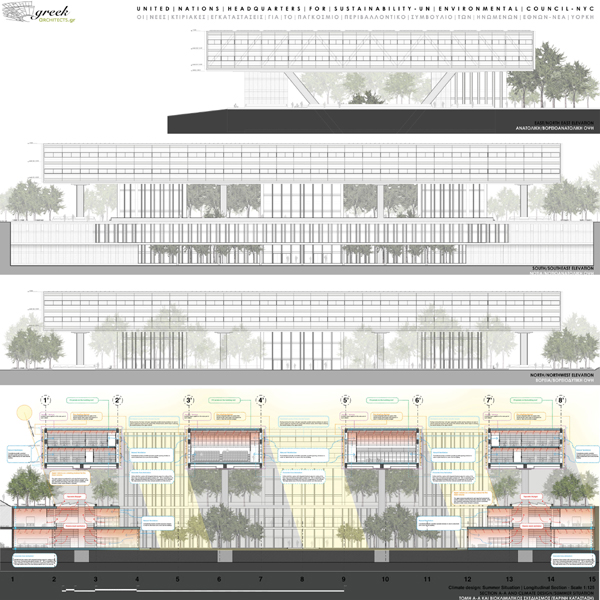
UNEC-Elevations/Section A-A.
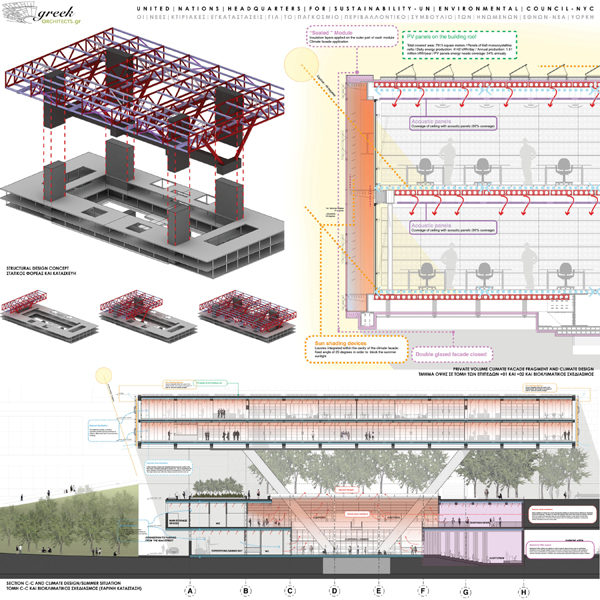
UNEC-Structural Concept/Sustainability.
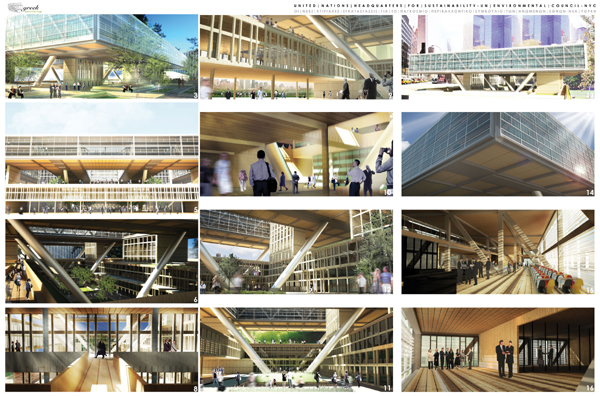
3D visualizations.










